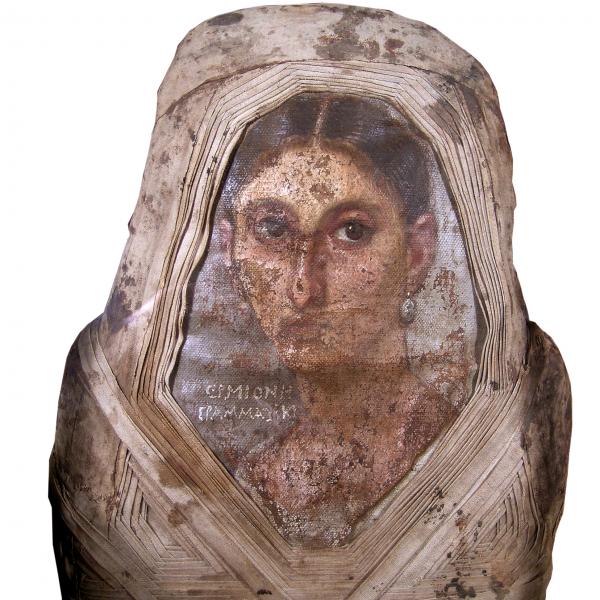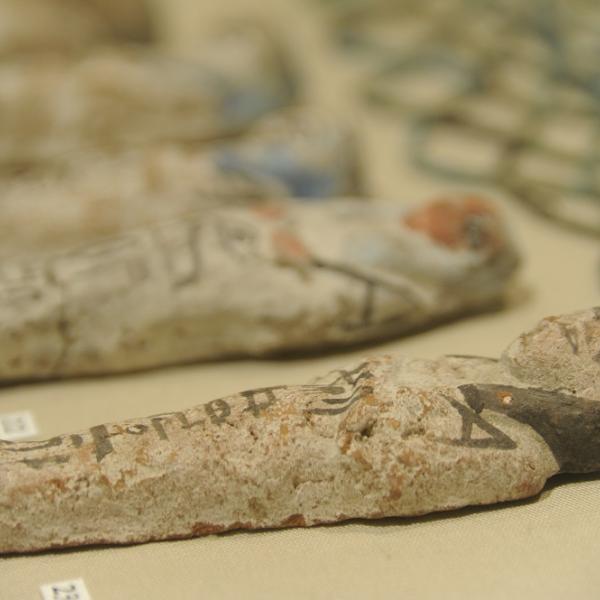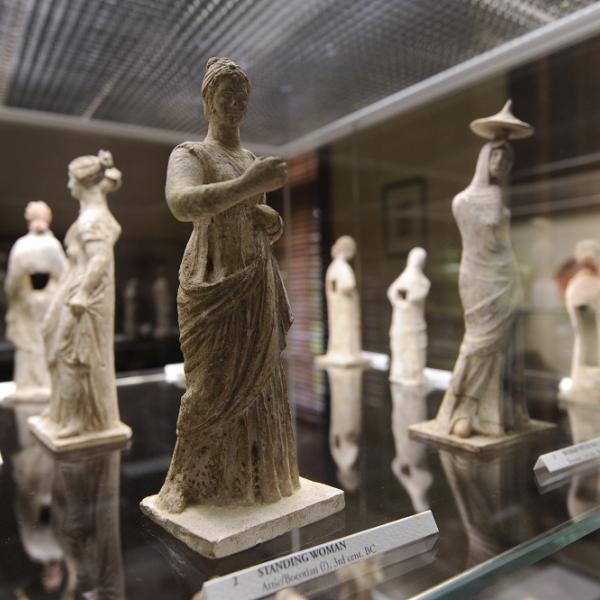- Please note the Lawrence Room will be closed from Monday 15 December 2025 to Wednesday 14 January 2026.
Girton’s Museum Collection – the Lawrence Room
Since its foundation, Girton has acquired a wide range of important artefacts and antiquities, often from its benefactors and supporters. Many of these were brought together early in the twentieth century in a small museum, later named the Lawrence Room in memory of Amy Lilian Lawrence (1891 Natural Sciences).
Resources
The Lawrence Room collection comprises three major elements
A selection of antiquities in the museum. From L–R (first row): Hermione, first century AD Roman portrait mummy; Shabtis.
(L-R second row): Tanagra figurines; Map of large Anglo-Saxon cemetery at Girton College.
In 1881, an extraordinary discovery was made at Girton – a large Anglo-Saxon cemetery. Excavations revealed more than 70 skeletons along with well over 100 cinerary urns.
These were filled with cremation ash and the burnt fragments of personal possessions dating from the fifth and sixth centuries AD.
Discovered simultaneously were two second-century Roman graves indicating that the site may have been occupied almost continuously from the Roman into the Anglo-Saxon period.
The Lawrence Room contains pieces from the excavations including a handsome Roman stone lion.
Our Egyptian collection includes predynastic pottery, and significant collections of shabtis, scarabs, beads, and amulets.
The undoubted star of the show is Hermione – a first century AD Roman portrait mummy. The beauty of Hermione’s portrait and the intricate pattern of her linen wrappings make her remarkable.
The inscription Hermionê Grammatikê (‘Hermione the language teacher’ or ‘Hermione the literary lady’) makes her unique, and her resting place apt.
Our Mediterranean material offers a cross-section of the Classical and pre-Classical worlds of interest to scholars and students alike.
This includes an impressive collection of Tanagra figurines – small, mould-cast terracotta statues of humans, animals and birds – dating to the fourth and third centuries BC.
Rethinking the Roman to Early Medieval Transition at Girton's Cemetery
Open Cambridge 2020
For Schools
If you would like to visit the Lawrence Room as part of a school group, please make an appointment to arrange curation and practical details by emailing the Lawrence Room Committee.
Please feel free to adapt the following resources:



